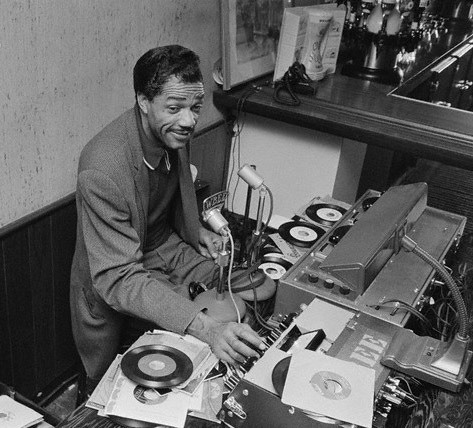
Ryan hooked me up with this great photo of Slim Gaillard.

Ryan hooked me up with this great photo of Slim Gaillard.
This is me:
Al, Leon, woman-I-don’t-know in Spirit Moves
No, srsly, this is me. And this is how all blues dancing should be done. SO SRS BLUES DANCERS.
‘Bessie Smith at the Office’ – Anne Emond
(if you like this, you can buy a nice print: from Ann’s shop)
Last night I dropped in at the Geoff Bull and the Finer Cuts gig at the Corridor in Newtown. The corridor is a skinny, two-story joint with a roof top garden and heaps of hipsters. Because it is a small space, you’re wedged up against the band. Literally – I was hip-to-butt with the saxophonist a few times, and Geoff had to ask some Rowdy Yoofs to be a bit careful when they danced. All three of them. There’s only one mic – for the vocals. Otherwise, everything’s as it’s meant to be in jazz: unamplified, rowdy, right there up in your face.
Geoff Bull is a gun. He holds those young people musicians together, the way a good band leader should. Without him, they flounder a bit. Every band needs a good leader. Watching, I was suddenly struck by the way jazz music is like jazz dance. Well, duh, but it really struck me last night. We’ve been focussing our teaching on rhythms and sharing rhythms lately, and I suddenly realised that a good jazz band shares a little rhythm or a bit of melody in a gig the way we share a nice rhythm on the dance floor. Geoff played a little clump of notes once, twice, his eyebrows raised in the direction of the (ninja) trombone dood. By the third time, trombone guy had it, and joined in, at first the same notes, then mucking with the harmony.
I was suddenly reminded of the way I might share a rhythm or a move with a friend on the social dance floor, either my partner in lindy hop, or my solo dancing buddy(s). Once, twice, and then you both have it.
Watching Geoff, I felt my muscles start to jump as the signal got through. Once, twice, and then I had to hold myself to my seat to stop from leaping up to join in.
Bump-bump-baaa-bumpty-bump.
Just like in class, when we’re teaching the beginners rhythms: we step it or scat it clap it, then they join in when they’re ready. Then we step it out. Then we’re all dancing together, all joining in on that one repeating rhythm. And then you each start to play with it, make it slightly different. And suddenly you realise that every dancer’s body makes the rhythm unique. If you’re tall, your steps are wider, the time between each step is longer, If you’re little and fierce, you can add a little accenting stampy-stamp. Just like the musicians in the band: lower notes for a trombone, shouting squawks from a trumpet, bouncing thumps from a bass.
Bump-bump-baaa-bumpty-bump.
Watching the band, I wondered how they’d feel about me jumping up and joining in. Would they like it? I know I would. Later on, Geoff encouraged clapping, and clapping at just the right time. I think he’d like it too.
Later on,
the band sang that song ‘Closer to the bone’, where the lyrics go like this:
Closest to the bone
Sweeter is the meat
Last slice of Virginia ham
Is the best that you can eat
Don’t talk about my baby
She’s slender but she’s sweet
Closest to the bone
And sweeter is the meatNow she’d make a good thermometer
If she drank a glass of wine
She’s built just like a garter snake
She climbs up like a vine
My friends tell me I’m a fool
To love a girl like that
Here’s the reason I like ’em slim
Instead of big and fat‘Cause…..Closest to the bone
Sweeter is the meat
Last slice of Virginia ham
Is the best that you can eat
Now don’t talk about my baby
She’s slender but she’s sweet
Closest to the bone
And sweeter is the meatNow she’d make a first class fountain pen
If she only knew how to write
Her figure’s like a piece of string
She rolls up every night
Everybody thinks that I’m a nut
To love this lovely worm
Boy there’s one reason I like ’em slim
Instead of round and firmSweeter is the meat
Last slice of Virginia ham
Is the best that you can eat
Now don’cha talk about my baby
She’s slender but she’s sweet,
Closest to the boneShe’d make a fine piccolo
If she only stayed on key
Boy she’s shaped like a rubber band
And she loves to snap at me
Everybody thinks I’m insane
To overlook her faults
But here’s the reason I like ’em skinny
Instead of full of schmaltz‘Cause…..Closest to the bone
Sweeter is the meat
Last slice of Virginia ham
Is the best that you can eat
Don’t talk about my baby
She’s slender but she’s sweet
And it’s closest to the bone
And sweeter is the meat
Ordinarily, I like this sort of song. But this one bothers me. Something about a man singing about consuming, objectifying a woman’s flesh, his insistence that her personality can be overlooked because she’s physically all that… nah. I don’t like that talk. In a context where women’s bodies are commodified by our culture, this song makes me feel a bit not ok. If it were a woman singing about a man… well. Maybe that’d be different.
Looking around the room (because for a moment, I didn’t want to look at or engage with the band), I realised there were at least a handful of thin, beautiful young women near us. I wondered what they thought about this objectification of their bodies. And then I realised, they were already letting me know what they thought, in the best way possible. They were talking to each other loudly and enthusiastically, ignoring the band. Your sexist song? It is beneath our notice. Sisterhood is far more powerful, yo.
I like this at a jazz gig. If a band can’t keep the attention of its audience, then it doesn’t deserve that attention. If what you’re saying and doing isn’t reaching out grabbing at the attention of the people in the room, your work isn’t working. Particularly if the room is about the size of a large train carriage. Almost the size.
It was an interesting moment. The song was fun, it was good, it involved a fair bit of shouting from the band. But the content wasn’t cutting it. It made me feel uncomfortable, and it wasn’t working for those fashionable, thin young women. Your shock-content song: it fails to register.
And this brings me (finally) to Ann Emond’s comic up there. Bessie Smith sang songs that objectified men’s (and women’s) bodies, with the sort of fleshly enthusiasm that blues is very good at. But she was a woman, a powerful black woman, singing about men. She wasn’t a bunch of white middle class jazz musician blokes in an inner western Sydney bar. She was in a tent or a bar, shouting at a crowd who respected her (or were about to respect her), and she was a black woman in a time and place when black women were only very recently objects to be bought and sold (by white men). It meant – it means – something very different. And I write this as someone who understand the blues music idiom. I understand that there are layers of meaning to a song, and that this particular song invites reading on the slant, as well as on the face of it. But I’m not convinced that there enough layers, or enough complexity in the delivery of that song last night.
I think that context is what makes a blues song. It’s what makes the lyrics work. And while I was enjoying that Finer Cuts gig – I did enjoy that gig, far more than the last time I’ve seen them – that particular song didn’t quite cut it. 1950s Louis Prima isn’t quite the same as 1920s Bessie Smith. Or even 1930s Louis Prima. And I’ve seen that song not quite cut it before when Puggsly Buzzard’s played it.
Sure, I understand that they’re trying to be bold with dirty, transgressive lyrics. But I don’t think there’s anything much transgressive about a bunch of enfranchised blokes singing about consuming the bodies of women. That’s really just business as usual. The status quo in our culture.
It was particularly telling when you consider the fact that a beautiful, young, slim, black woman had joined the band for a chorus or two of ‘Careless Love’ just a moment before. If I had seen her sing about the sweetness of meat close to the bone, about the skinny, snappy man she liked for his body, if it had been that woman belting out those lyrics, then the band really would have been doing something transgressive. It really would have been provocative.

The big news here in DJ supernerd land, is that my new Mosaic Coleman Hawkins collection has arrived. Yep, it’s great. There’s some Fletcher Henderson stuff in there that’ll blow your brains with the quality: you really feel as though your guts want to asplode with excitement. And there are some Metronome All-Star sessions from the 40s which really rock my boat. Especially the Frank Sinatra stuff – I love it when he plays with a real jazz band, as they stop him bullshitting on with his show pony act.
So what’s the big deal with these Mosaic sets? DJ nerds tend to get a bit squee about these sets. I admit, this is, for the most part, a fanboy thing, and I use the ‘boy’ quite deliberately – jazz fandom is totally boy dominated. Except for the bits I pwn.
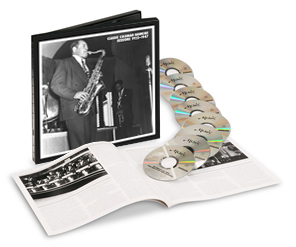
The Mosaic sets are built for fans, for collectors:
I have some Mosaic sets. They are totally GREAT. They are almost all of far better quality than any other recordings I own (though I’m still not convinced about the Duke Ellington small group set – I think my RCA/Bluebird ‘Duke’s Men’ CD sets are pretty good). There’s very little doubling up between sets (so even the Chu Berry, Lionel Hampton and Coleman Hawkins sets don’t give me much double up). Sets like the Count Basie Verve set are an absolute delight: brilliant quality, some fabulous 1950s stuff which really shines in these remastered recordings.
If you do want the definitive collection of works by an artist you’re going to eventually collect anyway (the Ellington set, the Basie/Lester young set, the Lionel Hampton set, maybe the Goodman set spring to mind), then the Mosaic box sets are perfect.
And there are plenty of sets which are full of great stuff for DJing: the Django Reinhardt set is brilliant (but, honestly, of limited use for DJing), the Lunceford set is no doubt a winner, the Louis Armstrong set looks fab, but could get a bit samey, there’s a great Okeh and Brunswick Bix Beiderbecke, Frank Trumbauer and Jack Teagarden set (1924-1936). There are plenty of brilliants Mosaic sets (many of which are out of print but can be found on ebay or amazon), but that’s a lot music. You’d want to be very sure you could use it.
But you know what? Nobody really needs all those bloody outtakes. Even if you’re going complete on someone like Stuff Smith, do you really want eighteen discs of Nat King Cole crooning his way through low-impact mellow? There’s no way you’re ever going to DJ even all the ‘danceable’ stuff (however you define that). And buying all the ‘cool’ Mosaic sets will not make you a better DJ. To be honest, even ripping all the music into your laptop for DJing is a bit of a waste of time – you’re only going to need to re-rip them all again in ten years time when technology moves on. And then you’re going to need to re-enter all that bpm, personnel and danceability information again. AGAIN. Mosaic sets are great, but their greatest value is as an item to display and to remember you own. They are fansquee.
I wouldn’t recommend a Mosaic set to a new DJ. I certainly wouldn’t recommend them to a new dancer. They range from $120 to $180 a set, and while you are getting between five and eight CDs of the best-quality sound and all those liner notes, that’s still a big chunk of cash. And even just five CDs by one band can wear on a listener’s ear. It’s almost certainly too much for a new dancer or DJ who really isn’t used to listening for a particular musician’s style or discerning sound quality. I’d probably even argue that an experienced DJ’s ear is so trashed by bullshit sound systems and overly mic-ed big bands they can’t discern those differences either.
But still.
I’m the type of person who adores outtakes. I love catching a moment in the studio with musicians I idolise. Just a minute of swearing and laughing. A drunken exclamation of frustration. The patience of a sound engineer requesting another take. I love all that. I love it. I love listening for the differences between takes, imagined or real. I love these massive sets. I love the way they arrive in the post, in that massive, robust cardboard box. I love peeling open the plastic. I even like swearing at the infamously crap Mosaic CD cases. Even when I crack a CD. Which I have. I especially the discographical detail. I love going through my collection and weeding out superseded duplicates. Can’t say I spend that much time with the liner notes, though. Once I’ve read (part of) them, I’m off. Mostly because there are few things I hate more than jazz journalism. It’s one of the last bastions of wanking boys club bullshit.
But I wouldn’t recommend these sets to every DJ or dancer.
I would, however, recommend the Mosaic singles or small packs.
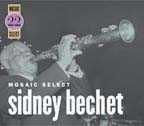
I’d have bought the Sidney Bechet Select 3-CD set if I didn’t already have 90% of it on other quality recordings. Bechet is one of those artists who’s not only good sauce for lindy hop, he’s also often in bands with other quality folk, so you get even more bang for your buck.
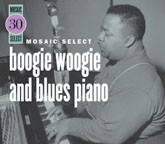
The Mosaic Select: Boogie Woogie & Blues Piano a little while ago, and it’s fabulous. Again, I’m not entirely sure it’s for everyone, as boogie piano can get pretty samey if you’re not a big fan, but this set is particularly good. I am a bit disappointed by the lack of women pianists – there are fuckloads of high profile women boogie pianists, but this set only manages to squeeze in one Mary Lou Williams track. SHAME. But there are some great Kansas shouters in there (Big Joe Turner!) and some fabulously swinging tracks for dancing. Or listening.
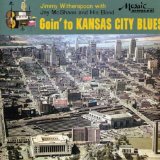
The Witherspoon/McShann ‘Goin to Kansas City’ Mosaic single is a must-have. I don’t think Mosaic sell it themselves any more, but you can buy it on amazon (bit exy if you’re not careful). You can buy it as a download, but I wouldn’t, as most of the commercial downloads are fucked up audio files. You really want that gorgeous Mosaic quality on CD. But that McShann/Witherspoon CD is solid gold. I DJ from it all the time, and I LOVE listening to it.
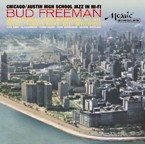
I also have my eye on this Bud Freeman/Jack Teagarden Mosaic single, but I’m not sure how great it’ll be for DJing.
So, to sumarise, the Mosaic sets are truly fabulous. They do tend towards the ‘top ten’ of jazz, so you don’t hear a lot of more unusual artists. But that’s ok, because most lindy hop DJing is about DJing the top ten of swing. If you’re a collector, or a DJ with a few years under your belt who just wants top shelf quality for DJing, then get into that action. If you’re new to DJing, go for the singles or 3-CD sets, just beware of the later stuff which is rubbish for DJing.
For my money, the best Mosaic sets are the ones following a particular musician through various bands, because you get a taste of a heap of bands:
The Chu Berry set will get you recordings from big bands led by Fletcher Henderson, Gene Krupa, Teddy Wilson, Henry ‘Red’ Allen, Cab Calloway, Wingy Manone, Lionel Hampton all from 1933-1941, prime lindy hopping territory.
The Coleman Hawkins set is also good, ranging from 1922 to 1947, with stuff by bands led by Fletcher Henderson, Lionel Hampton, smaller groups like the Chocolate Dandies and Mound City Blue Blowers, and later all-star recordings like the Metronome groups, and Hawkins’ and Cozy Cole’s own groups.
While there’s nothing as good as a well-mastered set of music by fabulous musicians, if you’re a newer DJ or dancer, you might be better off with the 2 or 3 CD sets by the big name labels for an introduction to key artists. And I do think the Ken Burns Jazz CDs are a brilliant place to begin collecting.
Five(ish) Minute Dance Lesson – African Dance: Lesson 3: Dancing on the Clock
– Music plays all the time in class
– the wide steps – wider than her hips (ie outside her body) – require super control in her core
– at 2.48 you can see how charleston works:
Frankie demonstrates charleston
– the way she lands with a bent knee, then uses the momentum of the step (and bent knee) to push up and step back show us how pulse or bounce work in lindy hop
Five(ish) Minute Dance Lesson: African Dance: Lesson 1: Dinhe
In this one
– the music plays all the time (note the call and response!)
– in the first movement her shoulders stay down, but her elbows lift up and down with her hands (note the importance of her steps and core activation in helping her make this movement happen and continue from her core out into her limbs)
– these wide arms with lifted elbows but dropped shoulders frame and emphasise the hips and legs
– when she isolates her diaphragm (moving the chest forwards and backwards) we can see how Leon’s throwing his chest forward (and arms back) create a frame for his (amazing) snake boogies, framing and emphasising his hips
– in the second ‘basket’ movement, the bent knees and ‘bounce’ creates the energy which she uses to step, and also to move her arms. Just like in lindy hop, her bounce keeps the beat (and generates and stores energy) while her steps and arms may move in different rhythms, but still using that stored energy
– the final call and response sequence shows how she can do both vertical movements (where she steps forwards and up with her knee) and also horizontal, where she swings her hips on a horizontal plane – just like a swivel. This isolation lets her do two types of movements, on two planes, but using her core (and bounce) as the epicenter (and engine) for her movements.
(John Lee Hooker, 1951, photo by Clemens Kalischer, found on Chasing Light)
[I’m DJing at the Jook Joint on Thursday. It won’t be like this. Bedlam Bar, 2 Glebe Point Rd, social dancing starts 8.30.]
Adam hooked me up with this on FB. It features AL AND LEON doin’ the do in the crowd. I am especially liking Al’s stripy shirt and beret.
I’m really keen on this because I’m currently on a bit of an Al and Leon kick, mostly for partner stuff, but I’ll never say no to a little solo action.
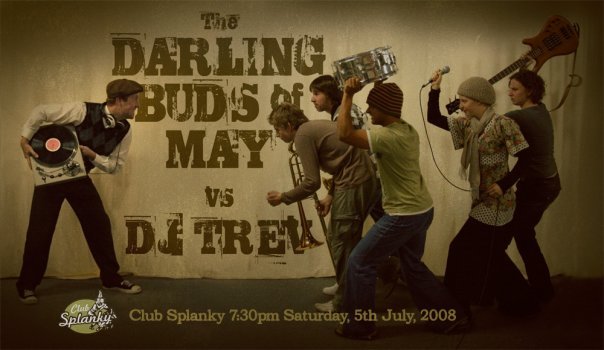
Trev made this. It is excellent.